paper
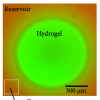 We demonstrate that bound mobility via tethered diffusion can be engineered into a synthetic gel using protein fragments derived from the nuclear pore complex.
We demonstrate that bound mobility via tethered diffusion can be engineered into a synthetic gel using protein fragments derived from the nuclear pore complex.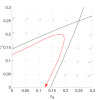 We develop a theory of steady-state overlap length which depends on the filament plus-end motor concentration, determined by a balance between motor arrival and
We develop a theory of steady-state overlap length which depends on the filament plus-end motor concentration, determined by a balance between motor arrival and
motor departure in the absence of motor-driven sliding.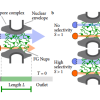 We develop a model motivated by features of the nuclear pore complex (NPC) which provides a framework to control binding-induced selective transport in bipolymeric materials.
We develop a model motivated by features of the nuclear pore complex (NPC) which provides a framework to control binding-induced selective transport in bipolymeric materials.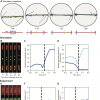 We develop a computational model of fission-yeast mitosis using a course-grained Brownian Dynamic framework in conjunction with a force-dependent kinetic Monte Carlo algorithm to replicate the biorientation and segregation of chromosomes.
We develop a computational model of fission-yeast mitosis using a course-grained Brownian Dynamic framework in conjunction with a force-dependent kinetic Monte Carlo algorithm to replicate the biorientation and segregation of chromosomes. We develop a torque-balance model that describes spindle assembly due to dynamic microtubule bundles, spindle-pole bodies, the nuclear envelope, and crosslinkers to predict spindle-assembly dynamics.
We develop a torque-balance model that describes spindle assembly due to dynamic microtubule bundles, spindle-pole bodies, the nuclear envelope, and crosslinkers to predict spindle-assembly dynamics.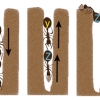 Groups of interacting active particles, insects, or humans can form clusters that hinder the goals of the collective. We find that digging performance can be robustly optimized within the constraints of narrow tunnels by individual idleness and retreating.
Groups of interacting active particles, insects, or humans can form clusters that hinder the goals of the collective. We find that digging performance can be robustly optimized within the constraints of narrow tunnels by individual idleness and retreating.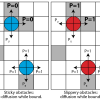 There are many biological systems in which tracer particles diffuse in a crowded environment. We implemented a lattice Monte Carlo model to analyze the effects of binding kinetics, bound motion, and obstacle size on tracer diffusive in the presence of soft obstacles.
There are many biological systems in which tracer particles diffuse in a crowded environment. We implemented a lattice Monte Carlo model to analyze the effects of binding kinetics, bound motion, and obstacle size on tracer diffusive in the presence of soft obstacles. Pushing forces generated by microtubule polymerization are sufficient to promote spindle pole separation and the assembly of bipolar spindle in the absence of molecular motors.
Pushing forces generated by microtubule polymerization are sufficient to promote spindle pole separation and the assembly of bipolar spindle in the absence of molecular motors.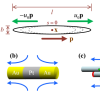 One of the simplest active suspensions with complex dynamics is a suspension of immotile "Extensor" particles that exert active extensile dipolar stresses on the fluid in which they are immersed.
One of the simplest active suspensions with complex dynamics is a suspension of immotile "Extensor" particles that exert active extensile dipolar stresses on the fluid in which they are immersed.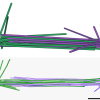 Microtubules, motors, and cross-linkers are important for bipolarity, but the mechanisms necessary and sufficient for spindle assembly remain unknown. We describe a physical model that exhibits de novo bipolar spindle formation.
Microtubules, motors, and cross-linkers are important for bipolarity, but the mechanisms necessary and sufficient for spindle assembly remain unknown. We describe a physical model that exhibits de novo bipolar spindle formation.

